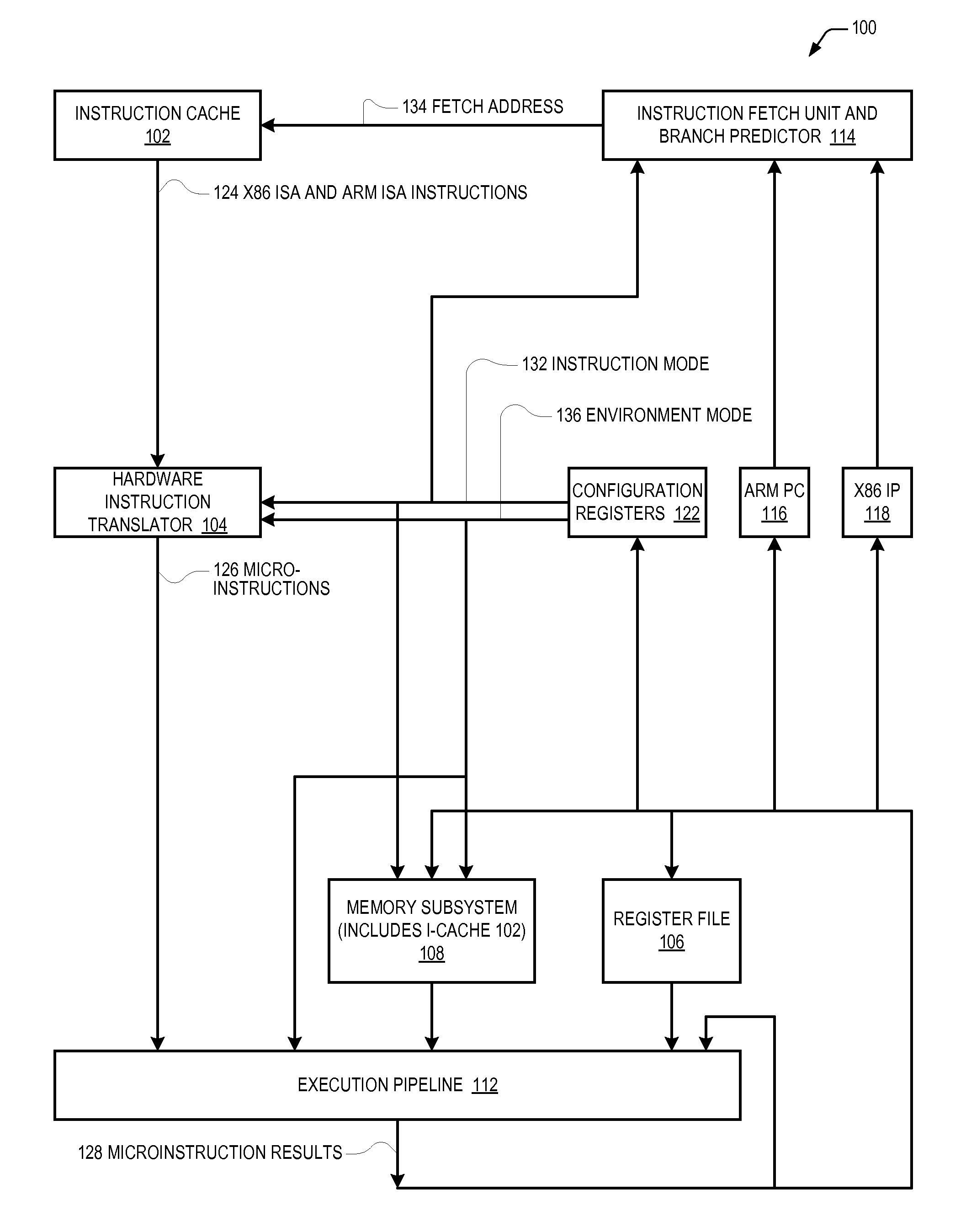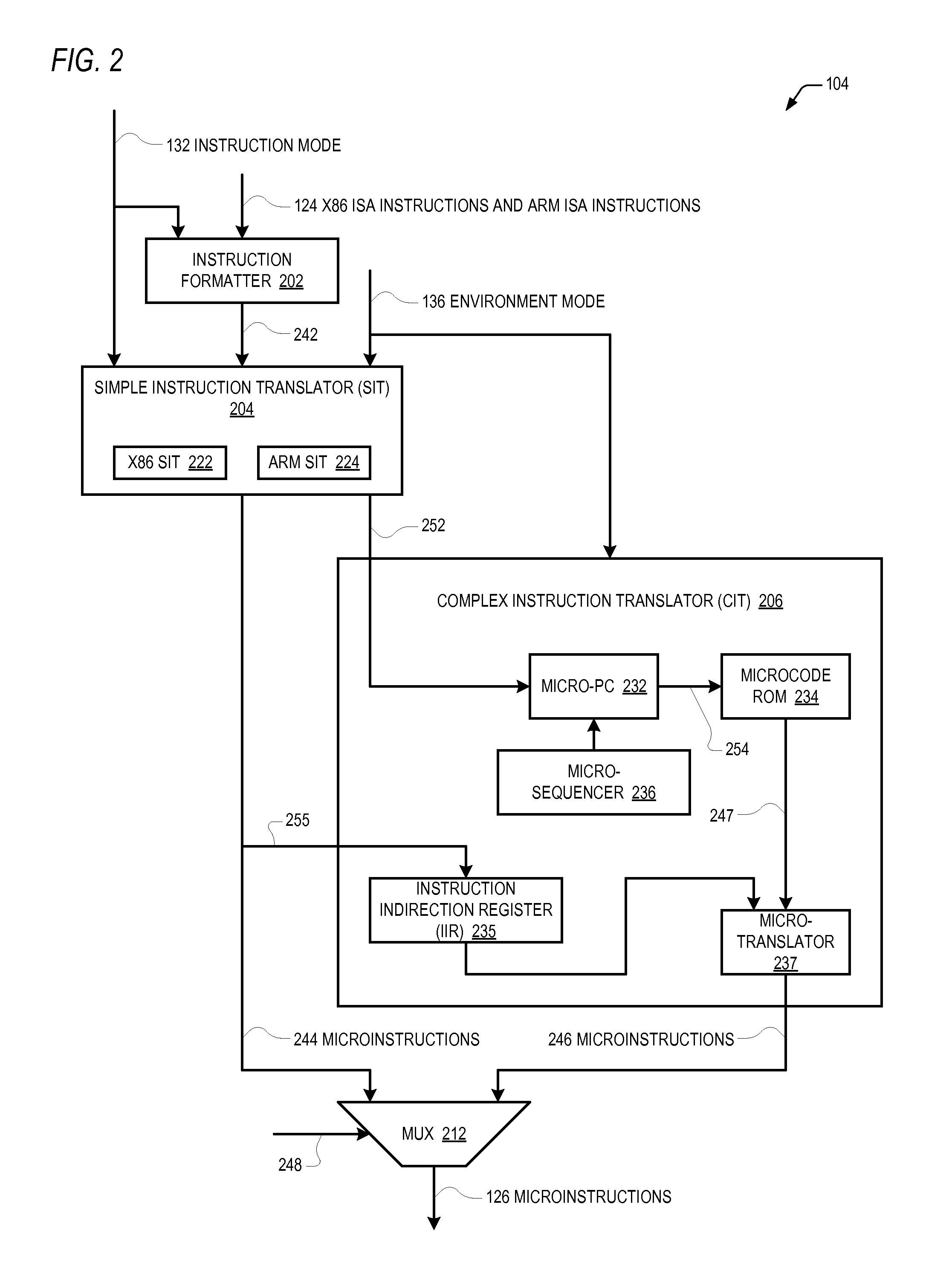Microprocessor that enables arm isa program to access 64-bit general purpose registers written by x86 isa program
a microprocessor and general purpose technology, applied in the direction of general purpose stored program computers, program control, instruments, etc., can solve the problems of large amounts of computing systems, the line between the different markets is evidently fading, and the manufacturers and consumers of computing devices in a dilemma
- Summary
- Abstract
- Description
- Claims
- Application Information
AI Technical Summary
Benefits of technology
Problems solved by technology
Method used
Image
Examples
Embodiment Construction
, which is filed concurrently herewith, and which is incorporated by reference herein in its entirety for all purposes.
BACKGROUND OF THE INVENTION
[0007]The x86 processor architecture, originally developed by Intel Corporation of Santa Clara, Calif., and the Advanced RISC Machines (ARM) architecture, originally developed by ARM Ltd. of Cambridge, UK, are well known in the art of computing. Many computing systems exist that include an ARM or x86 processor, and the demand for them appears to be increasing rapidly. Presently, the demand for ARM architecture processing cores appears to dominate low power, low cost segments of the computing market, such as cell phones, PDA's, tablet PCs, network routers and hubs, and set-top boxes (for example, the main processing power of the Apple iPhone and iPad is supplied by an ARM architecture processor core), while the demand for x86 architecture processors appears to dominate market segments that require higher performance that justifies higher co...
PUM
 Login to View More
Login to View More Abstract
Description
Claims
Application Information
 Login to View More
Login to View More - R&D
- Intellectual Property
- Life Sciences
- Materials
- Tech Scout
- Unparalleled Data Quality
- Higher Quality Content
- 60% Fewer Hallucinations
Browse by: Latest US Patents, China's latest patents, Technical Efficacy Thesaurus, Application Domain, Technology Topic, Popular Technical Reports.
© 2025 PatSnap. All rights reserved.Legal|Privacy policy|Modern Slavery Act Transparency Statement|Sitemap|About US| Contact US: help@patsnap.com



